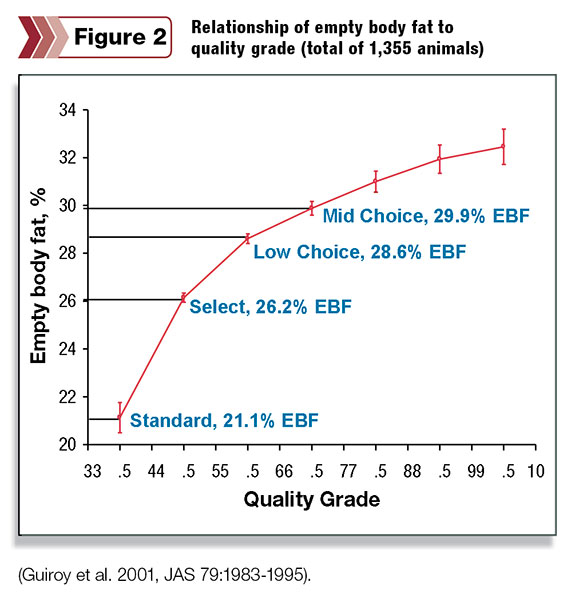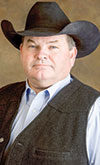There are two old sayings that fit when you are deciding on an implant strategy: “Buy with the end in mind” and “The eye of the master fattens the calf.”

‘Buy with the end in mind’
If you plan to market on a grid that pays dividends for high-grading cattle, then buying cattle that marble well and sell into choice markets might be an important consideration.
Markets can fluctuate from feeding to harvest, so one thing to keep in mind is utilizing the historical choice-select spreads to help determine the best option for an implant strategy.
Cattle feeders should analyze the forecasted choice-select spread from the moment cattle are bought and determine how this might affect the price at the future harvest date.
During the course of a year and from month to month, the choice-select spread can fluctuate significantly. For example, in 2012, the spread jumped considerably in July.
Beef with choice grade received nearly $15 more per hundredweight during this period. However, most fluctuations are more predictable based on the five-year average.
The spread generally experiences a decline in February through March and then rises in November and December.
Ultimately, consumers determine the demand for choice versus select beef, but cattle producers can take steps to forecast more accurately and implement strategies for market success.
Cattle feeders need to know the current and projected cost of feed, the projected future cattle prices and the corresponding basis for the months cattle will be sold.
Then the feeder, along with the consulting nutritionist, can make educated decisions about implant strategies.
For example, if feed currently is high and the spread for the harvest period is predicted to be high, producers might choose a maximum grading option (maximum cattle weight and implant program is cattle type-dependent).
Similarly, if feed is currently high and spread for the harvest period is predicted to be low, producers might buy for growth (maximize performance and aggressive implant strategy).

The more aggressive strategies improve growth and feedyard performance to a greater degree but require more management by the feedyard.
These strategies utilize the high-priced feed rations of today more efficiently by improving growth and reducing cost of gain.
However, the feedyard should understand that the cattle will need to be finished to their physiological end points to achieve the grade they might expect.
A more conservative strategy will elicit less of a growth response and will not reduce cost of gain quite as much, but it will allow for cattle to finish at lighter weights and can be more forgiving if cattle are sold early due to market demands.
Feeders utilizing this strategy also need to understand that final weight most likely will be somewhat less. Weight is always the main driver of any economic analysis.
However, there may be times when premiums paid on a certain grid or contract can override the weight advantage.
‘The eye of the master fattens the calf’
To maximize weight and grade in any set of cattle, the cattle need to be finished. Cattle need to be around 29 percent empty body fat (EBF) to give them the best chance of achieving their genetic potential to marble.
All cattle eventually will get to 29 percent EBF, as it is a function of days on feed and dry matter intake.
This makes an aggressive strategy effective for improving profit margins, but management needs to understand there is less room for error when deciding to send these cattle to harvest and still achieve the projected grade.
There are times when selling cattle “green,” or less than 29 percent EBF, can be profitable due to very high feed costs and selling on a live basis.
However, there are negative consequences to this marketing practice in terms of lower weight and less grade in the cattle.
As always, it is critical to have a close working relationship with your consulting nutritionist to best determine an implant program for all your cattle, as there are a plethora of options available to hit different markets and production goals. ![]()
 Wade Nichols
Wade Nichols
Technical Services Manager
Merck Animal Health







